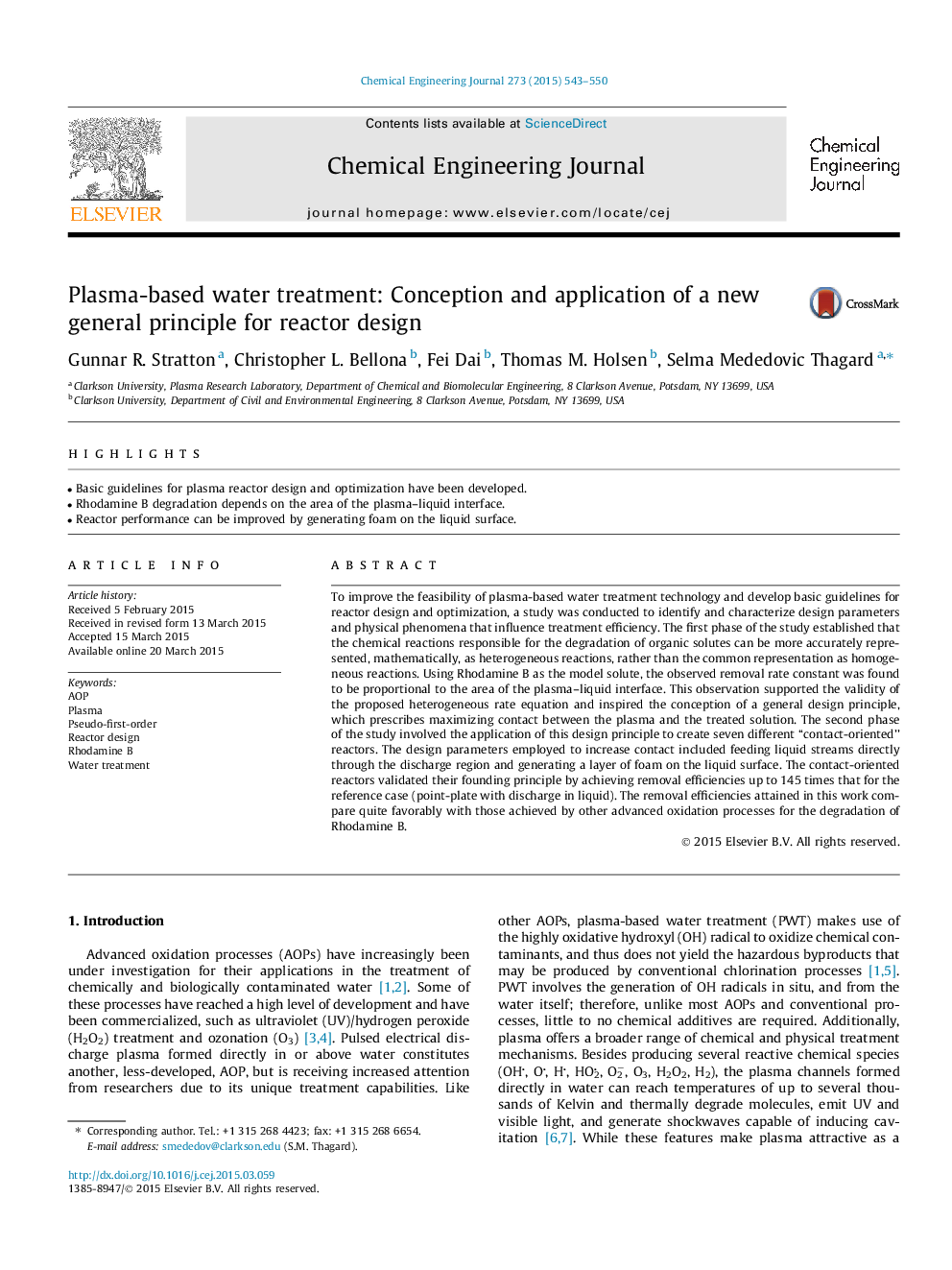| Article ID | Journal | Published Year | Pages | File Type |
|---|---|---|---|---|
| 6584934 | Chemical Engineering Journal | 2015 | 8 Pages |
Abstract
To improve the feasibility of plasma-based water treatment technology and develop basic guidelines for reactor design and optimization, a study was conducted to identify and characterize design parameters and physical phenomena that influence treatment efficiency. The first phase of the study established that the chemical reactions responsible for the degradation of organic solutes can be more accurately represented, mathematically, as heterogeneous reactions, rather than the common representation as homogeneous reactions. Using Rhodamine B as the model solute, the observed removal rate constant was found to be proportional to the area of the plasma-liquid interface. This observation supported the validity of the proposed heterogeneous rate equation and inspired the conception of a general design principle, which prescribes maximizing contact between the plasma and the treated solution. The second phase of the study involved the application of this design principle to create seven different “contact-oriented” reactors. The design parameters employed to increase contact included feeding liquid streams directly through the discharge region and generating a layer of foam on the liquid surface. The contact-oriented reactors validated their founding principle by achieving removal efficiencies up to 145 times that for the reference case (point-plate with discharge in liquid). The removal efficiencies attained in this work compare quite favorably with those achieved by other advanced oxidation processes for the degradation of Rhodamine B.
Related Topics
Physical Sciences and Engineering
Chemical Engineering
Chemical Engineering (General)
Authors
Gunnar R. Stratton, Christopher L. Bellona, Fei Dai, Thomas M. Holsen, Selma Mededovic Thagard,
